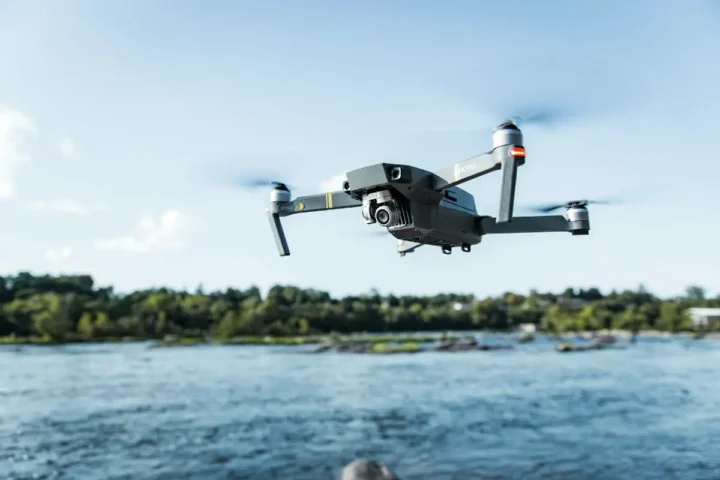Using Drones for Infrastructure Inspections: From Bridges to High-Rises
Infrastructure inspection plays a critical role in keeping bridges, high-rises and other complex structures safe and functional. Sonoran Desert Institute (SDI), accredited by the Distance Education Accrediting Commission (DEAC), prepares professionals to use drone technology as a safer, more efficient alternative to traditional inspection methods.
Conventional inspections often require heavy equipment and pose risks to personnel, but drones reduce those hazards while improving precision and access. Equipped with tools like LiDAR and thermal cameras, they help teams reach difficult areas and collect the detailed data needed to assess structural integrity.

Drones are helping inspectors work faster and safer without sacrificing detail. By reaching areas that once required cranes, scaffolding or road closures, drones make it easier to collect accurate information while keeping crews out of harm’s way. This shift allows teams to identify issues early and respond quickly, improving safety and reducing long-term repair costs.
Accessing Hard-to-Reach Areas
One of the most significant advantages of drones is their ability to navigate hard-to-reach areas that are challenging or dangerous for human inspectors. For example, bridge underpinnings, often located over rivers or canyons, require scaffolding or boats for thorough inspection. Similarly, inspecting the exteriors of skyscrapers and high-rise buildings often demands costly equipment such as cranes or suspended platforms.
Drones eliminate these logistical hurdles by providing rapid access to such areas. Equipped with high-resolution cameras, drones capture detailed visuals of structural components, including bridge cables, joints, building facades and rooftops.
Their maneuverability allows for close-up inspections of cracks, corrosion or other signs of wear that might otherwise go unnoticed. This capability supports a comprehensive assessment without compromising safety or efficiency.
Drones can navigate confined or hazardous spaces where traditional methods fall short. For instance, inspecting areas within tunnels, under bridges or around industrial structures becomes significantly easier and safer with drones. Their adaptability to varying environments makes them a versatile tool for complex inspections.
Improving Efficiency and Safety
Drones help inspectors work more efficiently while keeping them out of hazardous environments. By reducing the need for manual labor and heavy equipment, drones save time and lower costs significantly.
Traditional inspections often require weeks of preparation, including setting up scaffolding or coordinating machinery, while drones can be deployed within minutes. A bridge inspection that might take days using conventional methods can now be completed in just a few hours with a drone.
Working conditions are often one of the biggest challenges in infrastructure inspections. Drones help eliminate the need for inspectors to climb tall structures, enter confined spaces or work near active traffic. Remote data collection reduces the risk of accidents and makes inspections safer overall.
Sonoran Desert Institute recognizes that by lowering risk, cutting costs and limiting disruption to operations, drones are becoming an essential part of infrastructure management. Their ability to gather high-quality data without closing roads or halting operations makes them a valuable tool for teams aiming to inspect safely and efficiently.
This combination of enhanced safety and time savings significantly improves project timelines. When repairs or maintenance are required, early detection facilitated by drones ensures timely interventions, reducing the risk of more significant issues down the line.
Advanced Drone-Mounted Tools for Inspections
High-resolution cameras capture detailed imagery, allowing inspectors to identify minor defects and keep precise records. LiDAR technology generates precise 3D models, ideal for detecting deformations, measuring distances and mapping terrain with unmatched accuracy.
Thermal imaging allows drones to identify heat variations, revealing issues like water intrusion, insulation failures and cracks in concrete. Ultrasonic sensors further expand capabilities by measuring material thickness and detecting internal flaws in metal components.
As drone technology advances, future tools may include chemical analysis and vibration detection, offering even deeper insights into infrastructure health.
Applications in Infrastructure Inspections
Drones are transforming the way inspections are conducted across various types of infrastructure. Bridges, for example, benefit from drone inspections of underpinnings, cables and joints. The drones can inspect areas that are traditionally difficult to access. With the ability to hover and capture detailed imagery, drones provide a comprehensive view of the structure’s integrity.
High-rises and skyscrapers also see significant advantages with drone inspections. Instead of relying on cranes or suspended platforms, drones can navigate around buildings, inspecting facades for cracks, water damage or other structural concerns.
Similarly, drones are now being used to inspect wind turbines and energy facilities, reducing downtime and eliminating the risks associated with manual inspections at great heights or in hazardous environments.
The adaptability of drones to diverse applications, from industrial plants to public infrastructure, demonstrates their value across industries. Whether assessing a power plant’s cooling tower or inspecting railway lines for wear, drones enhance the precision and safety of every inspection.
The Future of Drone-Based Inspections
As drone technology continues to evolve, the potential applications for infrastructure inspections will expand even further. Advancements in Artificial Intelligence (AI) and machine learning are already enhancing the capabilities of drones, enabling real-time analysis of inspection data. For instance, AI-powered drones can detect anomalies or patterns automatically, providing instant feedback to inspectors.
Autonomous flight capabilities are another promising development. Drones programmed to follow pre-determined routes ensure consistent and comprehensive data collection over time. Combined with improvements in cloud computing, which simplifies data storage and sharing, these advancements are making drone technology more accessible and efficient.
As more industries recognize the benefits of drones, investments in research and development are driving further innovation. One such exciting prospect is the integration of drones into digital twin systems, where real-time data mirrors infrastructure conditions virtually.
A Smarter Path Forward for Infrastructure Safety
Drones are changing the way inspections are done across the infrastructure sector. By reaching difficult areas safely and collecting accurate data in less time, they reduce the risks and delays associated with traditional methods.
When paired with tools like LiDAR, thermal cameras and ultrasonic sensors, drones provide inspection teams with clear, detailed insights that support better decisions and more proactive maintenance.
As this technology continues to improve, drones will play an even larger role in keeping critical infrastructure safe and functional. Their ability to streamline inspections while reducing costs and improving safety makes them a practical, forward-looking choice for modern infrastructure management.


